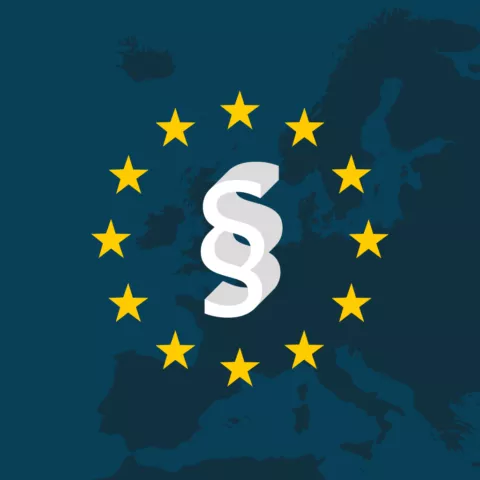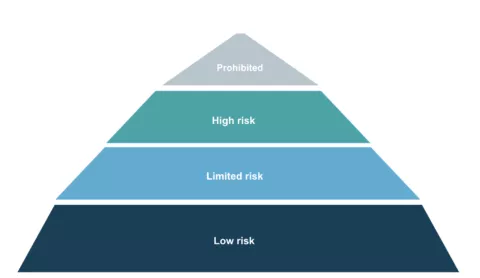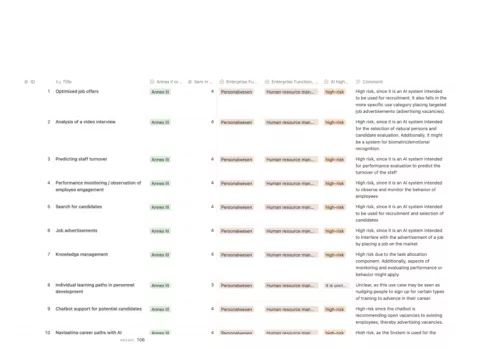Our goal is to develop an open reference library of cases as a reference for anyone who wants to apply AI in a functional area of the organization. Important: This is no legal advice. We take no responsibility for the correctness of the information provided. So please use it as reference only!
What data can I find here?
This table contains a total of 106 AI Systems (aka. Use Cases) in the enterprise along with a Risk Classification according to the European AI Act, with reference to the proposals of
- the EU Commission (April 2021)
- the EU Parlament Amendments (early/mid 2022)
- the EU Council (December 2022)
For each AI System, the table contains
Note: The English text was generated using Google Translate
- ID
- Title (EN only)
- Description (EN & DE)
- Enterprise Function (e.g. Marketing, Production, HR, Legal, … )
- Risk Class (High-Risk, Low-Risk, Prohibited)
- Classification Details
- Applicable Annex in the AI Act (II or III)
- For Annex III: The applicable sub-item (1-8)
- If high-risk or unclear classification: Comment with a rational


